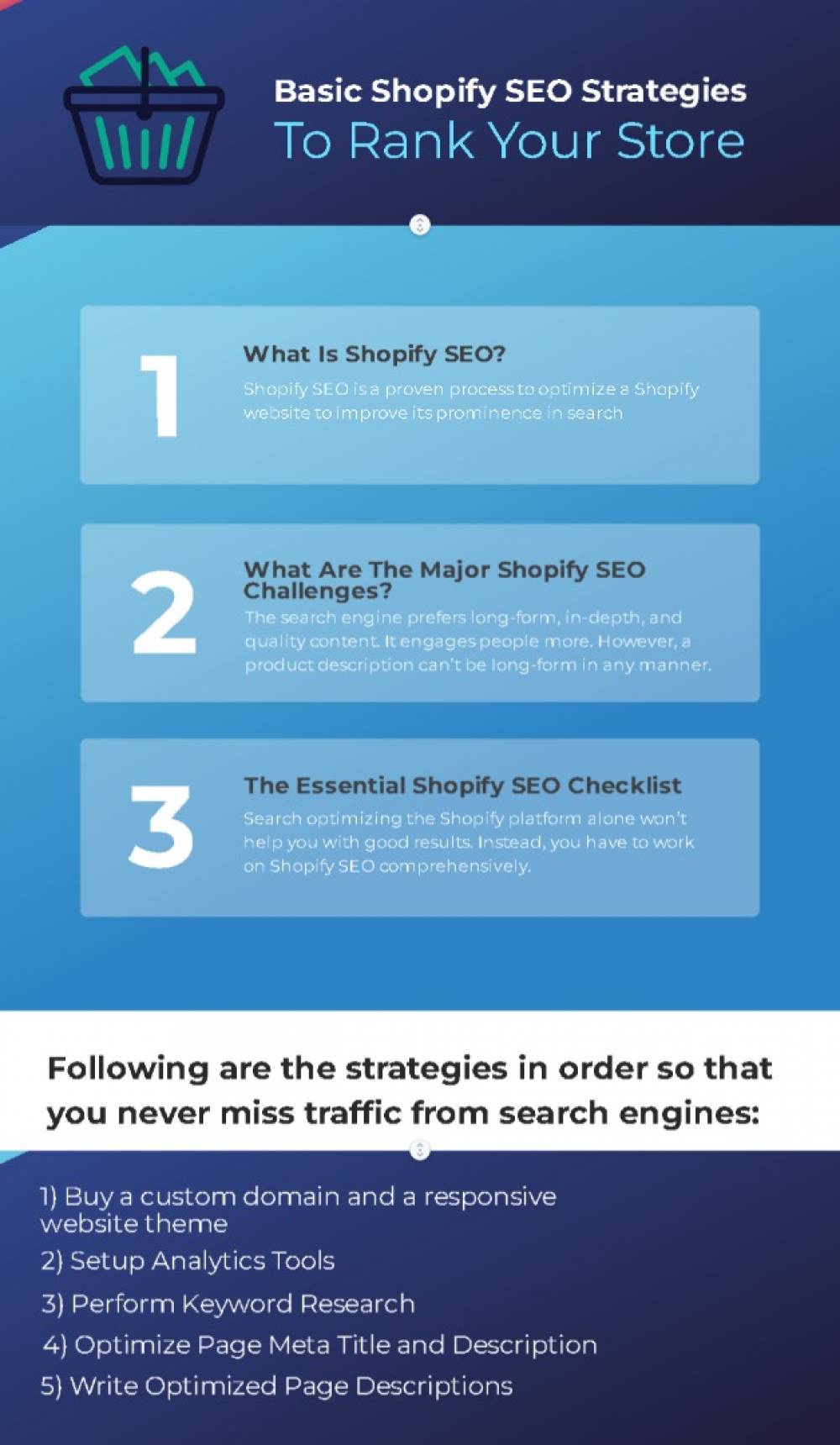
The Shopify platform cannot be optimized for search engines on its own. Instead, you must focus on Shopify SEO to the fullest extent possible. Ideally, it should begin right away on the first day that you’re hosting the domain name. You will never lose out on search engine traffic again if you use the strategies listed below:
- Invest in a custom domain name and a mobile-friendly website template
- Enhance the Descriptions of Your Pages
- Analyze Potential Keywords
- Optimization of Page Meta Title and Description
- Use Analytical Tools
-
Invest in a custom domain name and a mobile-friendly website template
Commonly, “myshopify” is added to the URL of a Shopify store. It’s highly recommended that you get your own domain name and host your website there. In search engine results, custom domains stand out as a branded entity, which is why so many people like to use them.
Additional considerations are fast-loading pages and the fastest page loading speeds. In recent months, Google has considered page loading speed a ranking consideration. A fast-loading and responsive theme is a must-have for your website.
-
Enhance the Descriptions of Your Pages
Weak content and duplicate material are common on product pages on eCommerce websites since there are so many of them. They are a roadblock that inhibits a store’s page from being ranked highly. As a result, while crafting meta descriptions, make sure to include relevant keywords, synonyms, and related terms.
-
Analyze Potential Keywords
This is an on-page SEO feature for Shopify. Identify the keywords that are highly related to your products and may attract more qualified visitors when you improve the content of your Shopify store.
You may use tools like SEMRush and Ahref to help you uncover competitive keywords that your users might be searching for. Find the most straightforward keywords to rank for. Make a list of search terms that will bring in the most customers to your online store.
When searching for keywords, look at the most important indicators, such as CPC, Keyword Difficulty, and Keyword Relevance. Enhance your product and category pages with highly competitive keywords by using them. Focus on transactional keywords when writing blog content.
-
Optimization of Page Meta Title and Description
While you’re adding products to the list, don’t forget to optimize their title tags and meta descriptions. Using Google’s guidelines for SEO, include your relevant keywords in the Meta.
The product page’s meta title can only be sixty characters long. Similarly, the description should not exceed 160 words in length. This item’s nature is determined by its title and description (metadata).
A search snippet based on your page’s meta title will be displayed if your page ranks well. The title of your search result can have an impact on whether or not a person clicks on it.
It is Google’s algorithm that determines if the content is semantically linked to keywords and phrases in the text. Consequently, you should avoid overusing keywords to improve keyword proximity. Meta tags should be used in a natural and organic way to describe the content of the page.
-
Use Analytical Tools
The use of analytics tools is critical to the success of any online store. An in-depth view of your e-commerce data is provided via the analytics dashboard. Google search console and analytics are two of the tools utilized by online marketers to learn more about their clients’ websites.
Website traffic and its origins must be measured using more than just these two ways. The sitemap should be sent to the search console after analytics have been set up.